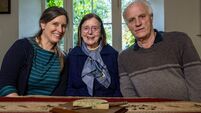New Irish classics: A recipe for homemade jambons, how to make turnip sexy, and more
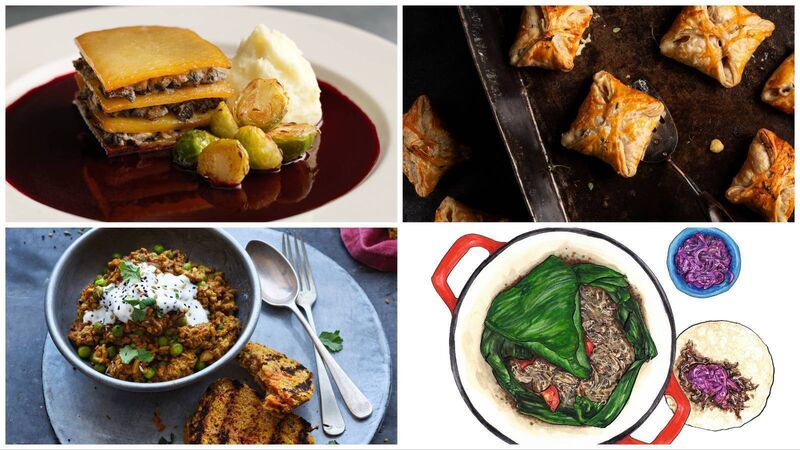
New Irish classics: Try these recipes that put a twist on Irish food
Panch phoron soda bread with lamb keema curry
Graham Herterich’s love of spices led to the development of the panch phoran soda bread recipe
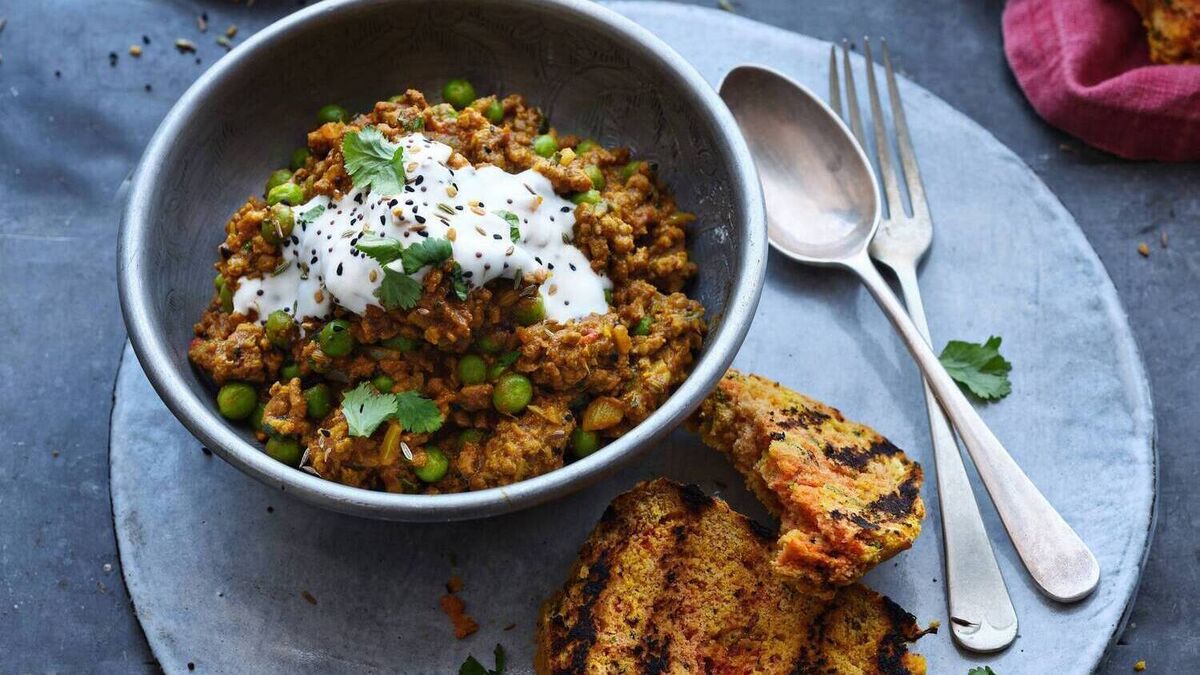
Servings
4Preparation Time
10 minsCooking Time
1 hours 10 minsTotal Time
1 hours 20 minsCourse
MainIngredients
For the panch phoron soda bread:
4 tbsp vegetable oil
1 medium onion, halved and thinly sliced
3 garlic cloves, finely chopped
2 tbsp panch phoron, plus a little extra to sprinkle on top
1 tbsp ground turmeric
500g plain flour, plus extra for dusting
1 tsp bread soda a small bunch of fresh coriander, leaves and stalks finely chopped
1 tsp salt
a pinch of freshly ground black pepper
350ml buttermilk
1 medium egg, beaten
For the lamb keema curry:
2 tbsp vegetable oil
1 medium onion, halved and thinly sliced
3 garlic cloves, finely chopped
2 fresh red chillies, deseeded and finely chopped
a thumb-sized piece of fresh ginger, peeled and grated
500g minced lamb
2 tbsp panch phoron
2 tbsp curry powder (mild or hot – your choice)
1 tbsp ground turmeric
1 x 400g tin of chopped tomatoes
200g frozen peas
2 tbsp natural yoghurt
a small bunch of fresh coriander, leaves and stalks finely chopped
Method
To make the bread, heat the oil in a frying pan on a medium heat. Add the onion and cook for about 10 minutes, stirring occasionally, until the onion is golden. Add the garlic, panch phoron and turmeric and cook for another 2–3 minutes to allow the spices to release their flavour. Take the pan off the heat and allow to cool.
Preheat the oven to 180°C fan. Prepare a baking sheet by lightly dusting it with a little plain flour.
Place the flour and bread soda in a large bowl and mix well using a table knife. Make a well in the centre of the flour, then add the cooled spiced onion, chopped fresh coriander, salt, pepper and the buttermilk. Mix gently before starting to incorporate them into the flour using a table knife. Bring the dough together, then tip it out onto a lightly floured surface and gently knead and shape the dough into a 20cm round.
Put the bread on the baking sheet and cut a deep cross on the top, then brush with the beaten egg – try not to get any egg into the cut lines – and sprinkle with a little more panch phoron. Bake in the preheated oven for 45 minutes, then turn the bread upside down and cook for a further 10 minutes. To check if the bread is baked, tap the bottom – it should sound hollow when fully cooked. Wrap in a clean tea towel while it’s cooling to stop the crust getting too hard.
To make the curry, heat the oil in a frying pan over a medium heat. Add the onion and cook for 8 minutes before adding the garlic, chillies and ginger. Cook for another 2 minutes, until everything has softened.
Turn up the heat to high before adding the lamb and breaking it up gently with a spoon. Cook for about 10 minutes but try not to overmix or move the lamb too much at this stage, allowing it to get a nice fried colour before moving it around again.
Add the spices and cook for a further 2–3 minutes, then add the tinned tomatoes and half a tin of water and bring to the boil. Reduce the heat and simmer for 20 minutes.
Add the frozen peas and yogurt and simmer for another 10 minutes. Stir in the coriander just before serving with toasted slices of the panch phoron soda bread.
Bake by Graham Herterich (€25) is published by Nine Bean Rows. ninebeanrowsbooks.com
The beloved jambon
A classic of the hot deli counter, Niamh Fox developed the recipe because she wanted to put it on her menu
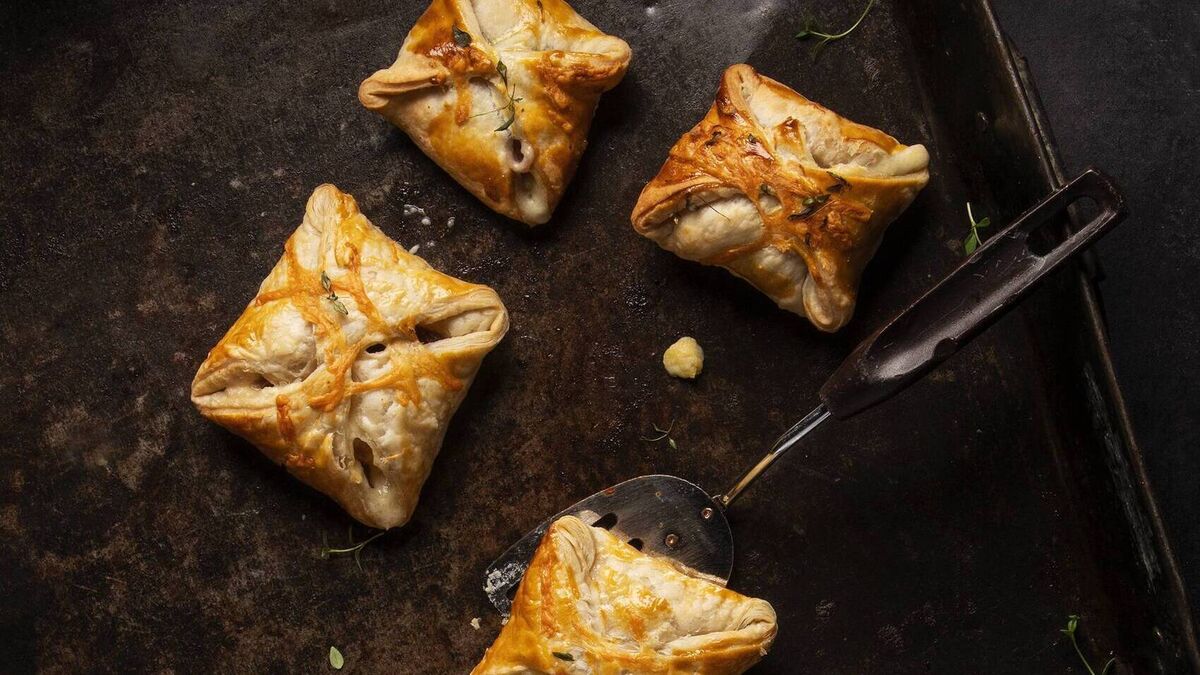
Servings
12Preparation Time
15 minsCooking Time
1 hours 10 minsTotal Time
1 hours 25 minsCourse
BakingIngredients
Rough puff pastry (Note: you can skip this part and buy it pre-made from the supermarket if you prefer)
225g strong flour, plus extra for dusting work surface
2.5ml (½ tsp) fine sea salt
250g butter, cold but not rock hard, cut into small cubes
150ml (¼ pint) ice-cold water
Roasted red onion
4 red onions, cut into quarters
splash of extra virgin olive oil
salt pepper
sprig of thyme, picked
a small sprinkling of brown sugar
For the creamy, dreamy white sauce:
50g butter
50g plain flour
500ml full fat milk
500g cheese, grated (I use a mix of Templegall, Gubbeen, Coolea, of course you can use a good Cheddar or bits and bobs from your fridge too.) Reserve a little to sprinkle.
pinch of nutmeg pepper and sea salt to taste
400g of the best free-range ham you can get your hands on, cut into little cubes
1 egg, beaten with a splash of milk, for brushing
Method
For the pastry, sift the flour and salt into a large mixing bowl. Stir the butter into the bowl until each piece is coated with flour. Add water to the bowl, working quickly to bring everything together to a rough dough. Gather the dough in the bowl, and then turn it onto the work surface. Squash the dough into a fat, flat sausage, without kneading. Wrap in clingfilm then chill the dough in the fridge for 15 minutes.
Lightly dust the work surface and the pastry. Roll out the pastry until it’s about 1cm thick and three times as long as it is wide. Straighten up the sides. Try to keep the top and bottom edges as square as possible.
Fold the bottom third of the pastry up, then the top third down, to make a block or a book. Again trying to keep corners nice and square. Press the edges of the pastry together with the rolling pin. Chill for 15 minutes.
Roll out and fold the pastry again, repeating this four times in all to make smooth dough, with buttery streaks here and there. If the pastry feels greasy at any point, or starts to spring back as you roll, then cover and chill it for 10 minutes before continuing. Chill the finished pastry for an hour, or ideally overnight, before using.
Next make the caramelised onions: mix everything together and pop in an oven set around 200°C for 30 minutes, then mix and cover and continue to cook for 15 minutes. Allow to cool.
To make the cheesy sauce, melt butter at low heat, stir in the flour and mix well until a dough starts to form. Gradually pour in the milk, mixing really well so that there are no lumps in the sauce. Once all the milk has been added, add the grated cheeses and a pinch of nutmeg & pepper and salt. Mix well until you get a thick cheese sauce. Add the finely cubed ham to the sauce, allow the mixture to cool.
To assemble the jambon, cut out squares from the pastry and place on a baking tray lined with baking paper.
Put a scoop of the cheese mixture in the centre of each square and a little of the caramelized onion, on top. Fold the corners to the centre and make sure they overlap (to avoid the ham & cheese from pouring out of the pastry). Pinch together the edges where needed. Brush the egg mix over the pastry and sprinkle the final bit of cheese on top, and repeat for the other squares.
Place the tray in the oven at 200°C for 15-20 minutes or until golden brown.
Niamh Fox’s jambon recipe is from Milk by John and Sally McKenna (Estragon Press) guides.ie
Braised turnip galette of chestnut & portobello with beetroot port gravy
Making turnip sexy. That’s what Denis Cotter achieved at Cork’s Paradiso restaurant when he put this braised turnip galette on the menu.
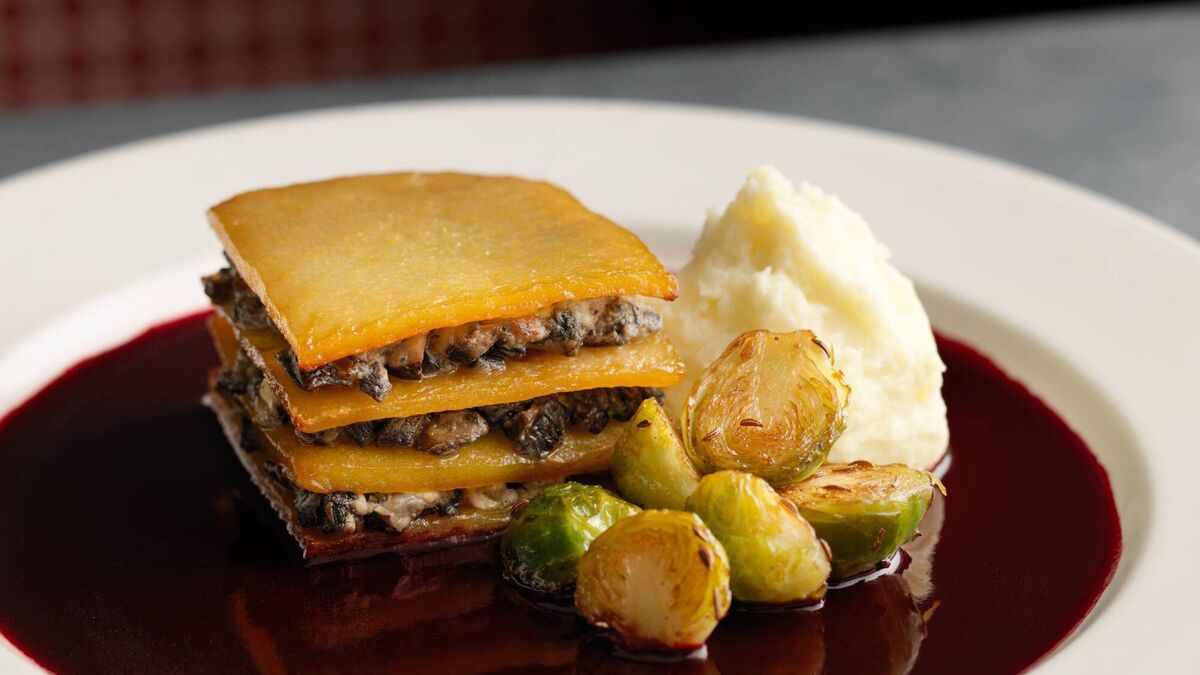
Servings
4Preparation Time
10 minsCooking Time
1 hours 5 minsTotal Time
1 hours 15 minsCourse
MainIngredients
For the galettes:
2 large turnips
4 tbsp butter
100mls white wine
100mls vegetable stock or water
For the filling:
4 large Portobello mushrooms
100g cooked chestnuts
100g cream cheese
For beetroot port gravy
600mls beetroot juice
300mls port
300mls tomato passata
1 small red onion, finely chopped
2 cloves garlic, chopped
1 stick celery or a small piece of celeriac, diced
2 cloves
80g cold, unsalted butter, diced
Method
First make the filling: Preheat the oven to 220°C.
Place the mushrooms on an oven tray, brush them with butter or olive oil, season with salt and roast until tender, 10-15 minutes.
Chop the roasted mushrooms coarsely and put them in a food processor with the chestnuts. Pulse to get a coarse puree. Remove to a sieve over a bowl and leave to cool, then fold the drained mushrooms into the cream cheese.
The turnips: While the mushrooms are cooking, peel and trim the turnips to get blocks from which you can cut square slices with sides of about 7-8cm and about 3mm thick - four slices per portion, sixteen in all. Take time to make sure they are of even thickness.
Lay the turnip slices in one or two oven dishes, slightly overlapping.
Melt the butter, wine and stock together in a small pan, and pour this over the turnip slices.
Lower the oven temperature to 160°C.
Season with salt, cover loosely with parchment, and place the turnips dishes in the oven for 40 minutes or more, until tender. The turnip slices should be soft enough to yield easily to a table knife but not fall apart.
Carefully remove the slices from the braising liquid and stack them in piles of four until later.
Beetroot port gravy: Simmer everything, except the butter, together for 20 minutes.
Purée and push through a fine sieve, saving the liquid. Return this to the stove and reduce it to half the volume.
Set aside until serving.
To finish: Place four slices of turnip on a parchment-lined oven tray and cover evenly with some of the mushroom-chestnut mixture, leaving a very narrow edge uncovered all round. Cover each with another turnip slice and repeat until each has four turnip layers and three of mushroom-chestnut. Press firmly to get a flat even top. Brush the tops with butter.
Place the galettes in the oven at 180°C to heat through for 7-10 minutes.
Finish the beetroot port gravy by bringing the beetroot liquid to a boil and whisking in the cubes of cold, unsalted butter to get a smooth thickened gravy.
Place a galette on each of four plates and pour a generous pool of sauce around.
Denis Cotter, Paradiso. paradiso.restaurant
Pork pibil tacos by Lily Ramirez-Foran
After years of cooking at home and for cookery demonstrations in Picado, Lily Ramirez-Foran knows that this dish can win anyone over.
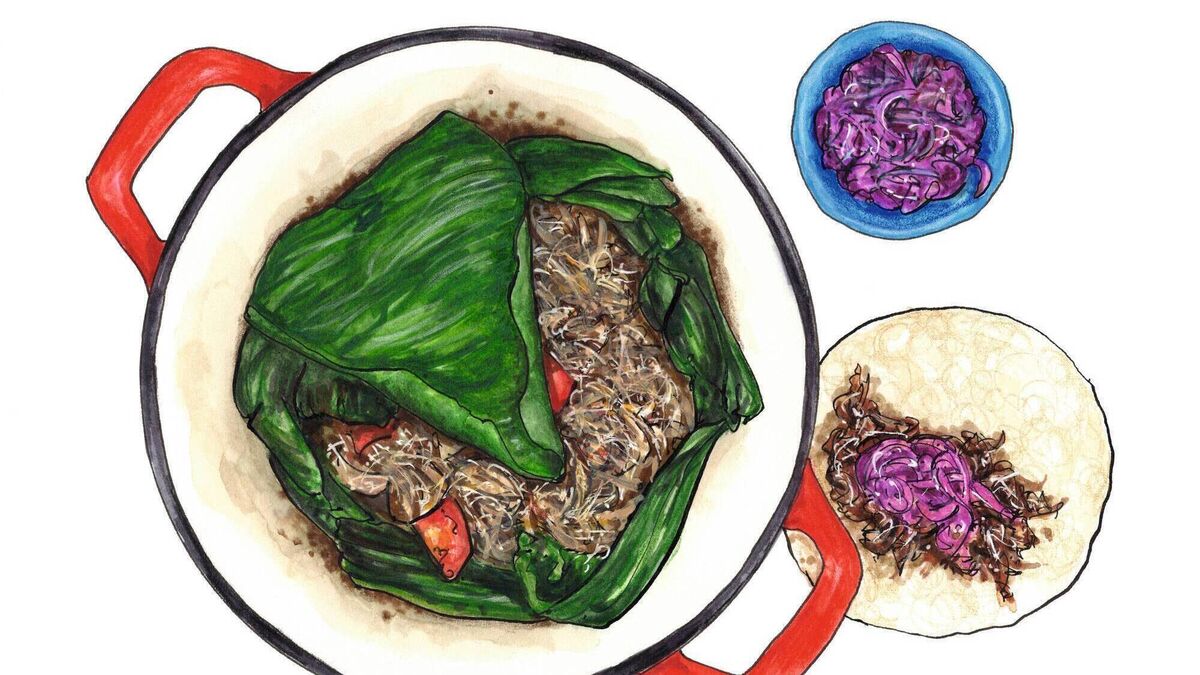
Servings
6Preparation Time
10 minsCooking Time
3 hours 40 minsTotal Time
3 hours 50 minsCourse
MainIngredients
1kg pork shoulder, skin left on, cut into three chunks
350g ripe tomatoes, cut into quarters
1 small onion, peeled and cut into quarters
5 large garlic cloves, peeled and left whole
1 x 7cm Mexican cinnamon stick
½ tsp black peppercorns
50g Mexican achiote paste
75ml apple cider vinegar
juice of 1 large orange 1½ tsp flaky sea salt 80ml water
For the tacos:
16 corn tortillas, warmed
de árbol salsa roja
red onion pickle
Method
Preheat the oven to 150°C.
Place the pieces of pork in a large heavy-based casserole, skin facing up so it doesn’t stick. Add the tomato and onion quarters, wedging them in between the pieces of meat and on the top. Set aside.
Place the whole garlic cloves in a hot, dry frying pan over a high heat, turning them every minute or so – the aim is to have lovely golden garlic with plenty of charred bits and a sweet smell. This will take about 6 minutes. Halfway through, add the cinnamon stick to the same pan and toast it for 2–3 minutes before adding the peppercorns and toasting for 1 minute more, until they are fragrant. The kitchen should smell beautiful by now.
Transfer everything from the pan to a blender followed by the achiote paste, apple cider vinegar, orange juice, salt and 40ml of the water. Blend until smooth, then pour the sauce over the meat in the casserole. Use the remaining 40ml of water to rinse any leftover sauce out of the blender and pour this into the casserole too.
Cover with a piece of parchment paper cut to fit your casserole and cover the casserole with its lid. Transfer to the oven and roast for 3½ hours.
Take the casserole out of the oven and uncover the meat. Everything should be soft so, using two forks, shred the meat and crush the tomatoes and onions, making sure to mix everything together – there should be enough sauce to coat everything well. I normally just carry the casserole to the table and let the meat rest and soak up all the flavours of the sauce while I get everything else together.
Set the table and bring over bowls of the de árbol salsa roja and red onion pickle to add a little heat. To assemble your tacos, add some pork to a warm corn tortilla, then spoon over some of the salsa and red onion pickle.
Blasta Books #1: Tacos by Lily Ramirez-Foran (€15) is published by Blasta Books. blastabooks.com



